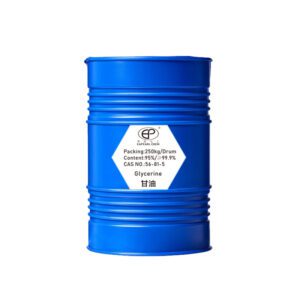In the dynamic world of industrial chemicals, triethylene glycol (TEG) is a versatile and essential player. At EAPEARL, understanding the nuanced roles of such chemicals is part of our expertise. Triethylene Glycol (TEG), with the molecular formula HOCH₂CH₂OCH₂CH₂OCH₂CH₂OH, is a colorless, odorless, viscous liquid used as a plasticizer for vinyl polymers and as a disinfectant in aerosolized air sanitizer products. Its utility extends from manufacturing processes to everyday products, making it an indispensable chemical in the industrial landscape.


Stay with us as we delve into the world of TEG, unraveling its applications and assessing its safety and environmental impact.
Exploring Triethylene Glycol in Depth
How does triethylene glycol function effectively in gas dehydration processes?
Triethylene glycol (TEG) is a powerhouse in gas dehydration, primarily used to remove water vapor from natural gas. Its hygroscopic nature allows it to absorb moisture efficiently. In dehydration units, TEG is heated and contacted with natural gas. The water vapor from the gas is absorbed into the TEG, leaving the gas dry. This process is crucial in preventing pipeline corrosion and freezing, which can be disastrous in gas transport and processing. TEG’s high boiling point and affinity for water make it ideal for this purpose, ensuring that natural gas remains safe and efficient for transport and use
What makes triethylene glycol a preferred solvent in various industrial applications?
TEG’s popularity as a solvent stems from its versatility and chemical stability. It can dissolve various substances, making it essential in creating products like inks, adhesives, and textiles. Its non-reactive nature means it doesn’t interfere with other chemical processes, a significant advantage in complex manufacturing. Furthermore, its low volatility ensures it doesn’t evaporate quickly, allowing for more controlled and efficient production processes. This combination of properties makes TEG an invaluable tool in various industrial applications.
Is triethylene glycol safe for use in products that come into contact with skin?
Safety is paramount at EAPEARL, and when it comes to TEG, we’re reassured by its relatively low toxicity. While it’s always essential to use chemicals responsibly, TEG is generally considered safe for use in products that contact the skin. It’s less irritating than other glycol compounds and is often found in products like skin creams and cosmetics. However, as with any chemical, appropriate concentrations and formulations are crucial to ensure safety and efficacy.
How does triethylene glycol compare to similar chemicals like ethylene glycol regarding safety and effectiveness?
Compared with ethylene glycol, TEG stands out for its lower toxicity and higher boiling point. While ethylene glycol is effective in its applications, its higher toxicity levels, especially when ingested, pose significant risks. TEG offers a safer alternative for many applications, especially where direct human contact is possible. Its effectiveness in various industrial processes, combined with a better safety profile, makes TEG preferable in scenarios where safety cannot be compromised.
What environmental considerations are associated with the use of triethylene glycol?
In terms of environmental impact, TEG has a relatively favorable profile. It is biodegradable, which reduces long-term ecological risks. However, responsible handling and disposal are crucial to prevent potential ecological damage. At EAPEARL, we adhere to strict environmental guidelines to ensure our TEG use aligns with our sustainability commitment. This includes monitoring its usage and ensuring that waste management practices minimize ecological impact.
Are there specific regulations that govern the industrial use of triethylene glycol?
Yes, like many industrial chemicals, TEG is subject to various regulations to ensure safety and environmental protection. These regulations may vary by region but typically cover handling, storage, disposal, and exposure limits. Compliance with these regulations is critical, and at EAPEARL, we ensure that our use of TEG meets and exceeds these regulatory requirements. This commitment helps us maintain our operations’ highest safety and environmental responsibility standards.
Conclusion
Triethylene glycol is more than just a chemical; it’s an integral component that drives efficiency and safety in various industries. Understanding its multifaceted role helps us at EAPEARL deliver products that align with industry standards and consumer expectations.
For more information on our TEG products, visit EAPEARL’s Triethylene Glycol page.














